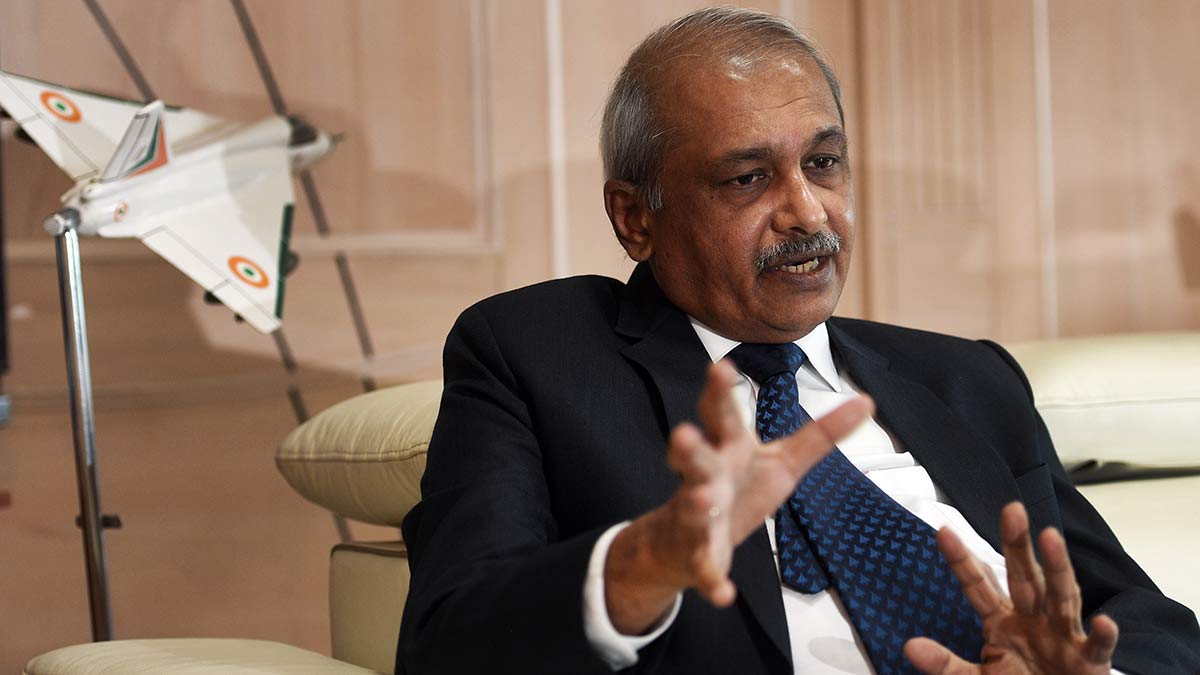The helicopter engine to be built by Safran-HMT joint venture has massive potential for export: R. Madhavan, former CMD, Hindustan Aeronautics Limited
 R. Madhavan | Bhanu Prakash Chandra
R. Madhavan | Bhanu Prakash Chandra
THE LAST FEW years have seen a resurgence in the manufacturing sector in our country. We have been successful in manufacturing a wide range of products, from pharmaceuticals to cellphones to cars, rockets and satellites. In the defence sector, we were known to be one of the biggest importers of equipment and technologies with hardly any defence equipment to call our own. However, the tides are turning with the government’s ‘Make in India’ initiative and the national requirement to be self-sufficient in defence. We have realised that dependence on foreign sources can be disastrous during war. The present push for indigenously developed defence systems has yielded results and now we have our own designed aircraft, helicopters, missile systems, naval and land-based systems.
While we were able to develop and produce aircraft, we are still dependent on foreign suppliers for advanced avionics and engines. In case of avionics, we are fast closing the gap through a renewed push by the Defence Research and Development Organisation (DRDO), defence public sector undertakings and the private sector. However, having an aero engine to power our aircraft and helicopters is still a dream. Our attempts at development of fighter aircraft engine by Gas Turbine Research Establishment (a DRDO lab) have not achieved the targeted thrust and is still some way from fruition. Two projects by Hindustan Aeronautics Limited (HAL)—one for helicopters and another a medium thrust jet engine—are undergoing development testing.
To the uninitiated, an engine for aircraft applications falls broadly in three categories:
a) Commercial aircraft application: These high bypass engines are required to be fuel efficient and less polluting to the environment. The engine could be turbofan or turboprop with matched propellers. Compared to the military aircraft, the usage is sedate and is characterised by long service life between overhauls.
b) Fighter jet application: These engines are required to be power dense. To increase the power output for a given air intake, these engines are fitted with an afterburner. They operate under severe conditions with varying power requirement and have relatively shorter service life between overhauls.
c) Helicopter applications: These are turboshaft engines and draw power from the main turbine shaft through a gearbox which, in turn, powers the rotors of the helicopter.
As a layman, one would ask why is it so difficult to develop an aircraft engine when we can send satellites to space and land on the moon. Well, an aircraft engine is one of the most complicated pieces of engineering, with only a handful of companies in the world having the technology to design and manufacture them. An aero engine has to operate under severe temperature conditions and varying atmospheric conditions, both on ground and at high altitudes. The engines have to be designed to get a very high power-to-weight ratio, leading to materials being subjected to extreme stresses and high temperatures. This has led to the development of state-of-the-art high temperature alloys, surface treatment technologies and cooling systems. Developing an engine is more an art than science, as it involves a careful balance of airflow and combustion under varying environmental conditions while also achieving the desired stability and reliability. Developing an engine requires a huge investment in R&D and some 10 to 12 years.
Against this backdrop, India needs to invest in development of engines for our future fixed-wing aircraft programmes like Light Combat Aircraft-Mk2, twin engine aircraft and the fifth-generation Advanced Medium Combat Aircraft. We also need a large turboshaft engine of the order of 2000KW, two of which will power the 10-tonne Indian Multi Role Helicopter (IMRH), which is slated to replace the ageing Mi-17 helicopters.
To cut the development time and to not waste resources in reinventing the wheel, the DRDO is in the process of developing a 110kN to 125kN engine in partnership with a foreign original equipment manufacturer (OEM). And, HAL has already inked a joint venture with Safran of France to co-develop an engine for IMRH within the country. This engine has a huge potential for export to other helicopter OEMs.
A development programme of this size not only brings in self-reliance in defence needs of the country while saving lakhs of crores in foreign exchange, it also galvanises the Indian defence industry that will be part of the supply chain. There will be a huge requirement for precision casting and forgings specifically in areas of investment castings, blisks (integral blades and disc), single crystal blades and thin-walled castings. The industry will also be called upon to supply casting and forgings of titanium, aluminium and high temperature alloys. Indian entities will be involved in development of special coating technologies, which could lead to companies setting up common facilities for surface treatments and heat treatment that can later be used for servicing other foreign and domestic OEMs.
On the manufacturing front, we will need sheet metal components like combustion chamber and casings shrouds. There are more than 3,000 MSMEs in the aerospace sector that will get a shot in the arm, especially since many are presently facing an order crunch owing to the closure of ongoing projects. Other areas like composites, electrical accessories, engine control systems, sensors, gauging and fuel systems will require involvement of the private sector in the R&D of these systems, which will mean a quantum jump in technology absorption of the indigenous defence industry.
The writer is former CMD of Hindustan Aeronautics Limited.
The Week